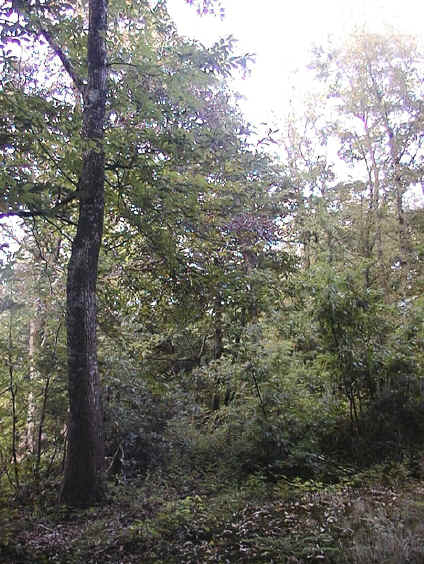Deciduous Woodland
 |
| In some areas of the reserve where the rhododendron
was cleared in the late 1980's, deciduous woodland is now thriving. The clearance of
the rhododendron allowed light onto the ground beneath the tree canopy, enabling some
deciduous saplings and other plants to grow. This is helping to replace the under
and middle storey of native plant growth destroyed by the rhododendron. Although the
taller mature oak trees were not killed by the invasive plant, they will eventually die
and need to have younger trees growing on to replace them. From a wildlife habitat point of view, deciduous woodland will support many more species of plant and animal than will a conifer forest. However it is less profitable to the landowner because it takes many more years of growth before any of the trees are suitable to be cut for their timber. Deciduous trees all lose their leaves in the winter. The leaves form a carpet on the ground beneath the trees and eventually rot down forming a type of natural compost full of nutrients. This makes an ideal home and foodsource to all kinds of plant and invertebrate life and forms the base of the forest food chain, supporting in turn all the larger animals including mammals and birds that live in the forest. Two picture galleries of forest animals and plants here. |
Visit the Woodland Education Centre